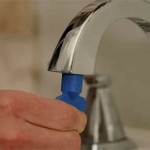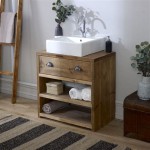How Do You Remove Mould From Bathroom Ceilings?
Mould growth on bathroom ceilings is a common problem due to the consistently high humidity levels. Left untreated, mould can not only damage the ceiling surface but also pose health risks. Effective mould removal requires identifying the cause, selecting the right cleaning solution, and taking preventative measures to hinder future growth.
Identifying the Source of the Problem
Before attempting mould removal, it's crucial to determine the underlying cause of the moisture problem. This could range from inadequate ventilation to leaking pipes or a damaged roof. Addressing the source is essential for preventing mould from returning after cleaning.
- Check for leaks in the plumbing system, including pipes and fixtures.
- Inspect the roof for any signs of damage or leaks.
- Evaluate the bathroom's ventilation system to ensure it's functioning correctly and adequately removing moisture.
- Consider the possibility of condensation buildup due to insufficient insulation.
Necessary Safety Precautions
Mould exposure can trigger allergic reactions and respiratory issues. Protecting oneself during the cleaning process is paramount.
- Wear protective gloves to prevent skin contact with mould and cleaning solutions.
- Use a respirator or a N95 mask to avoid inhaling mould spores.
- Wear safety goggles to protect eyes from splashes.
- Ensure adequate ventilation in the bathroom by opening a window or using a fan.
Choosing the Right Cleaning Solution
Several effective cleaning solutions can be used to remove mould from bathroom ceilings. The choice depends on the severity of the mould growth and the type of ceiling material.
Bleach Solution:
A diluted bleach solution (one part bleach to ten parts water) is a powerful disinfectant effective against most types of mould. However, it can discolour some ceiling materials, so it's advisable to test it in an inconspicuous area first.Vinegar:
White vinegar is a natural and less harsh alternative to bleach. It effectively kills many types of mould and mildew and is safe for most surfaces.Baking Soda:
A paste of baking soda and water can be applied to the affected area and left for a few hours before scrubbing. Baking soda is a mild abrasive and helps remove stubborn mould stains.Commercial Mould Cleaners:
Various commercial mould cleaners are available, offering specialized formulations for different surfaces and levels of mould infestation. Always follow the manufacturer's instructions carefully.
Cleaning the Affected Area
The cleaning process requires careful application and scrubbing to remove the mould thoroughly without damaging the ceiling.
- Apply the chosen cleaning solution to the affected area using a spray bottle or sponge.
- Allow the solution to sit for the recommended time, usually 10-15 minutes, to penetrate the mould.
- Scrub the area gently with a soft-bristled brush or sponge to remove the mould.
- Rinse the area thoroughly with clean water to remove any remaining cleaning solution.
- Dry the ceiling completely using a clean towel or fan. Thorough drying is crucial for preventing mould regrowth.
Dealing with Porous Ceiling Tiles
Porous ceiling tiles are particularly susceptible to mould growth. The porous nature of the material allows mould to penetrate deeply, making it challenging to remove completely.
- Assess the extent of the mould damage. If the mould has deeply penetrated the tiles, replacement might be the most effective solution.
- For less severe cases, try cleaning the tiles with a bleach solution or a commercial mould cleaner, following the manufacturer's instructions carefully.
- Ensure the tiles are thoroughly dried after cleaning to prevent mould recurrence.
Preventing Future Mould Growth
Once the mould has been removed, preventative measures are vital to ensure it doesn't return. Addressing the root cause of the moisture problem and maintaining proper ventilation are key.
- Repair any leaks in the plumbing or roof promptly.
- Improve bathroom ventilation by installing or upgrading an exhaust fan.
- Run the exhaust fan during and after showers or baths to remove excess moisture.
- Reduce condensation by increasing insulation in the bathroom.
- Wipe down walls and ceilings after showering to minimize moisture buildup.
- Regularly clean the bathroom to prevent mould spores from settling and growing.
Dealing with Extensive Mould Infestations
Large or recurring mould infestations may require professional intervention. Professional mould remediation services have the expertise and equipment to handle complex mould problems safely and effectively.
- Consider professional help if the mould covers a large area or keeps returning despite cleaning efforts.
- Professional remediation services can identify hidden mould growth and address underlying moisture issues.
- They utilize specialized cleaning techniques and equipment to remove mould thoroughly and prevent its return.

Bathroom Ceiling Mold Removal When To Clean Call Branch Environmental

Cleaning Mold From Bathroom Ceilings Like A Pro Lovetoknow

Cleaning Mrs Hinch Fans Share Tips To Remove Ceiling Mould Express Co

How To Remove Mould From Your Bathroom Ceiling Cleanipedia Za

Don T Let Mould Take Over How To Remove It From Your Ceiling

What Is The Best Way To Remove Mold From Bathroom Ceiling

Remove Bathroom Mould From Your Ceiling

Mold On Bathroom Ceiling How To Clean Off

I Tried Out Mrs Hinch Fans 29p Mould Removing And These Were The Results Express Co

Mold On Bathroom Ceiling How To Clean Off
Related Posts







